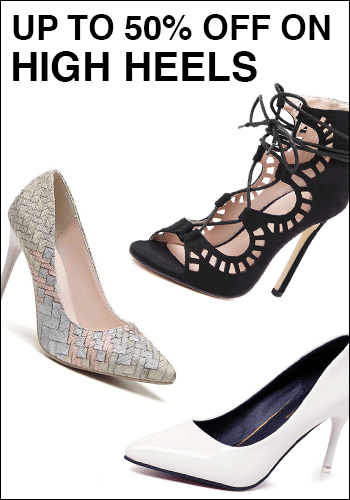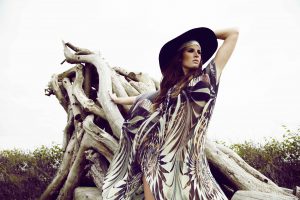The term bohemian was originally used to describe a particular lifestyle which was first identified around 200 years ago, following the French Revolution. It was used to refer to unconventional, or ’free spirited’ people, who were mostly poor artists, actors, musicians, writers, spiritual gurus and similar, living in large European cities.
It may not be a very powerful word these days, but back then the term ‘bohemian’ could be pretty negative, perhaps because the label was associated with people who had strong, often unpopular, opinions on things like politics and society. Basically they were the people who challenged government policies, spoke out about inequality, and generally refused to conform to conventional opinions and rules of behaviour. Some practiced free love, others chose to live in poverty, shunning the trappings of comfort and possessions, and most avoided taking conventional jobs where they would lose their independence. People from all backgrounds embraced the bohemian lifestyle, including the very wealthy and those with titles!
The trigger which led to the Bohemian counterculture
In pre- revolution France people from the arty professions were generally funded by the rich, who could both afford to buy their paintings and novels or hire them to play at parties, and who appreciated their cultural value. Post revolution France was of course a bleak place for them to be, and lacking financial support or a definite role in society it was inevitable that a new lifestyle would emerge to suit their changed circumstances.
In modern language we would say bohemians are like sofa-surfing drifters who dress largely from charity shops and refuse to conform. At the time they lived in the only way possible to survive, which meant recycling clothes or perhaps relying on the generosity of their network to provide them with a home for short periods of time. Some people likened them to the nomadic gypsies thought to be from an area named bohemia in Eastern Europe, and claim that’s how the movement got its name.
The bohemian look
Although there are some variations, the main threads of bohemian culture remain consistent with the attitude that freedom from constraints is important. In terms of appearance and fashion this translated into hair being worn long, loose and free, with clothing also being loose and comfortable, and often worn out, or showing signs of repair like scars on a battleground. Cultivating such a look delivered a statement to society – one which said ‘I probably should care what you think, but I don’t.’
Although we use the term ’bohemian fashion’ quite freely the phrase does not really describe one particular look. Part of the fun is the freedom this style grants to mix, match and blend clothing and accessories in ways which suit individual circumstances, opinions and beliefs, or even particular moods. Plus of course it is inevitably influenced by the popular culture of each era it lives through.
Early 19th century bohemians favoured clothes influenced by the far east and medieval England, while those identifying with the Aesthetic Movement – a body of people who hated the Victorian idea of narrow social roles and mass production, rebelled by adopting clothing styles from the past. Specifically they chose one off pieces produced by craftsmen, free style over close fitted, simple rather than tediously formal; they wanted pieces which were comfortable instead of constrained, dyed by hand and not en masse though a factory process.
Some common factors have always been important though, such as the desire to wear old, used or recycled clothes, often with a slightly disheveled look, or the fact that outfits are always carefully planned to produce the end result, no matter how haphazard and thrown together that may look. Perhaps most importantly for contemporary fashion is the common nod to peasant style themed clothing, which seems to have become the leading look in all things modern and mainstream bohemian.
Shifting tides
Talking about events which shaped fashion two centuries ago makes them seem rather out of reach and perhaps even irrelevant, but when it comes to Bohemian culture the driving forces behind it have never disappeared, instead they re-appear in slightly different forms throughout the decades since, and by doing so its relationship with fashion has been maintained quite strongly.
Early 20th century fashion designer Paul Poiret artfully blended ethnic influenced designs into mainstream clothes, drawing on peasant costumes from Russia and popular outfits from the far east to dazzle women with comfortable loose harem trousers and slinky tunics.
Shortly after fashion was forced to adapt to wartime conditions and shortages, and women called into the workplace while men were sent away to fight had a dual excuse for dumping corsets and embracing the forerunner to modern bras. The need to suffer for fashion was in decline, but it would be twenty years or so later before bohemian ideals, fuelled by conflicting attitudes to society, culture and life, had a major influence on fashion once again.
Modern bohemian fashion influences
In the 1960s we saw Beatnik sub culture, people with a passionate commitment to self expression through artistic pursuit. Their stark clothing suited Bohemian styling guidelines well, as did the relaxed, mixed up, free flowing garb of the other counter culture of that era, the (often) politically outspoken hippies. Since then the fashion element of bohemian culture has become the dominant force, and in most cases those who chose to wear it have no inkling of or interest in the social and political commitments it grew up alongside.
There have always been those who chose to dress this way, whether for comfort or to support the key beliefs it stands for, but it was the actor Sienna Miller who made the world fall back in love with ruffled skirt and off the shoulder ‘gypsy tops’ following her 2004 Glastonbury adventures. Bohemian fashion has found a niche in the mainstream market, with its pretty ethnic print slip dresses, and flowing wide legged trousers. But who knows what the next fifty years hold for a fashion theme which has proved itself to be anything other than a flash in the pan!





Recent Comments